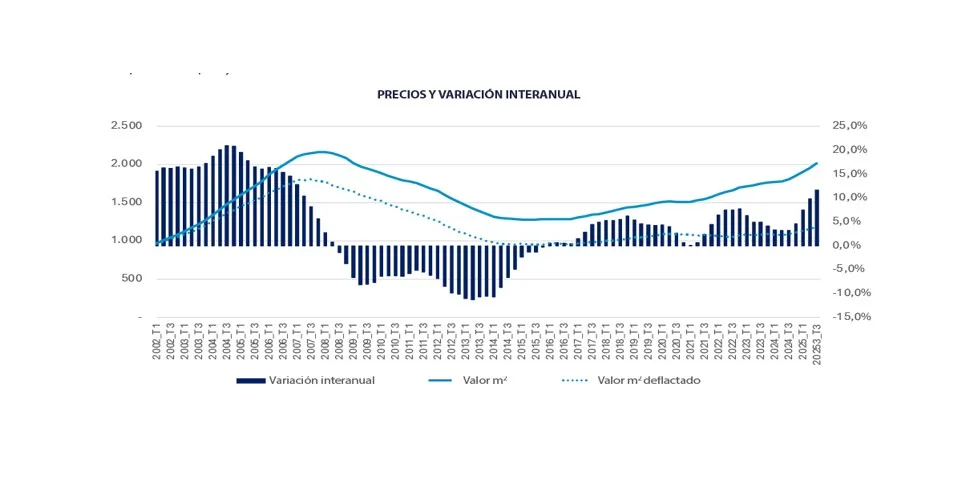

Spanish house prices are rising fast again, with Madrid now leading the charge and overtaking San Sebastián as the most expensive city in Spain.
The national picture: a cycle in full upswing
According to the latest Tinsa IMIE Local Markets index, average Spanish house prices rose 11.7% year-on-year in Q3 (8.6% in real terms). That marks an acceleration compared to previous quarters. Demand remains close to post-bubble highs while the supply of homes for sale lags far behind, creating a perfect recipe for rising values.
Madrid is the standout story. Prices in the capital jumped 19.5% over the last 12 months, lifting the average to €4,664 per square metre. That figure not only represents the steepest increase in the country but also puts Madrid ahead of San Sebastián as Spain’s most expensive housing market.


A widening boom, but at what cost?
It’s not just Madrid. Thirteen provinces posted double-digit annual increases in Q3, up from nine in the previous quarter. Málaga and Alicante rose by 15%, the Balearics by almost 15%, and Santa Cruz de Tenerife by 14.5%. Price pressure is now evident not only in major job hubs and tourist markets but also in inland provinces previously considered stable.
At the same time, affordability is deteriorating. Spanish households now need to devote 34.8% of disposable income to cover a standard mortgage, with that figure surpassing 50% in Madrid, Barcelona, Málaga and San Sebastián.
In short, Spain’s residential market is firmly in an upcycle. But as prices soar faster than incomes, the risk is that demand – which has carried the market to its current highs – could begin to falter further down the road.